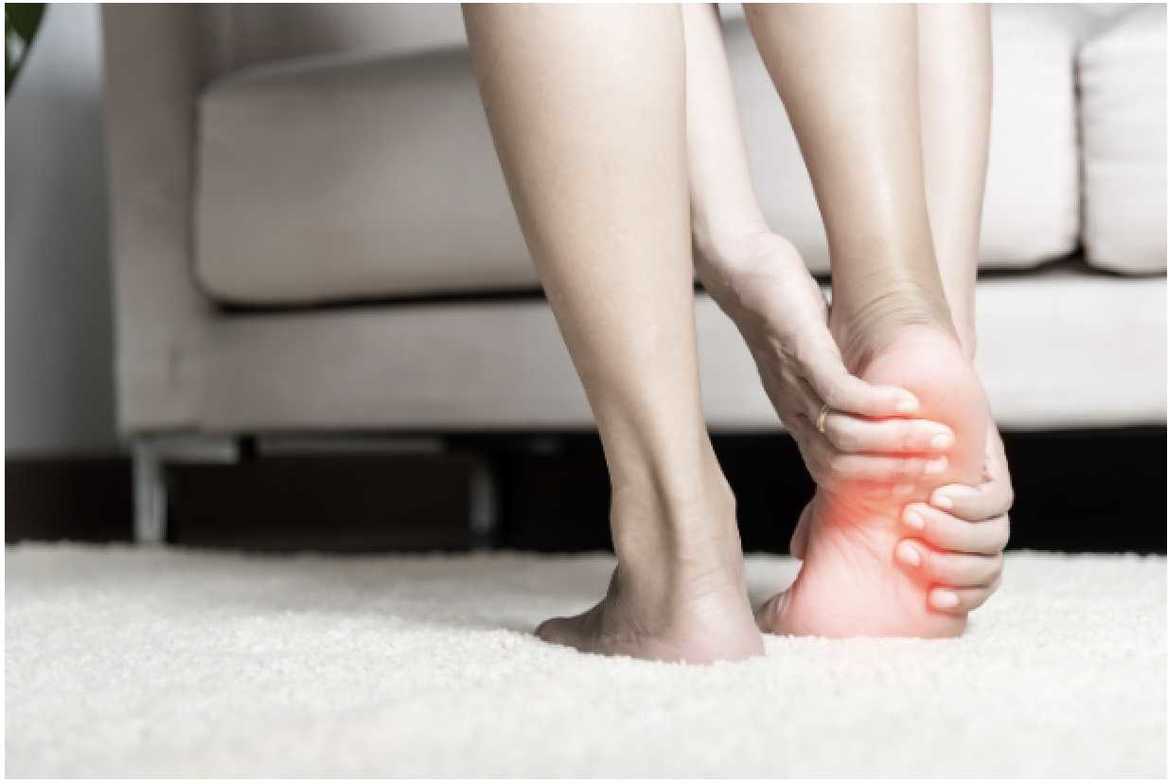
Most Common Cause Of Heel Pain- Easy and Effective Treatment Options
Heel pain can be a debilitating symptom that affects most aspects of our daily lives. There are many causes of why a patient may be experiencing heel pain and a seemingly endless amount of treatment options. It can leave us confused and questioning “should I rest”, “should I ice”, or “should I stretch.” While different treatment options are effective for different conditions we are going to discuss the most common cause of heel pain and how you can effectively start treatment.
The most common cause of heel pain is a condition known as Plantar Fasciitis. Plantar Fasciitis is due to inflammation and irritation of the plantar fascia the thin but extremely strong layer of connective tissue that lies on the bottom of our feet. This condition is most commonly described as pain to the anterior medial aspect of the calcaneus. Many patients will describe the pain as sharp and stabbing and are usually worse upon waking and taking the first step out of bed.
Determining the cause of plantar fasciitis has widely been debated with most theories lacking validity and evidence. Some common theories that are believed to cause plantar fasciitis are
- Foot structure (Having low or high arches)
- Footwear (Are my shoes causing my plantar fasciitis?)
- Exercise level (Is plantar fasciitis an overuse injury?)
- Hip weakness (Does hip weakness cause plantar fasciitis?)
Sullivan et al conducted a study looking to determine predicting factors for plantar fasciitis (heel pain) the study conducted looked at a number of factors in healthy subjects and compared them to patients with diagnosed plantar fasciitis. Out of all of the factors that were compared between healthy and control subjects 3 key predictors were found,
- Weakness in peroneal muscle
- Weakness in the intrinsic arch muscles
- Calf muscular inflexibility
The number one predicting factor that was significantly different in the study was peroneal muscle weakness. This study has helped guide effective treatment methods that target the three key causes above.
Now that we discussed the causes of plantar fasciitis let’s dive into our favorite treatment options.
1. The Toe Pro
The Toe Pro is a tool designed by Dr. Tom Michaud that can specifically and effectively target the peroneal muscles. The tool is a rubber-slanted platform on that different exercises can be performed. Strengthening the peroneal muscles has been proven to offload the plantar fascia and decrease overall tension that is contributing to the perceived pain.
2. Dynamic Neuromuscular Stabilization (Tripod Foot Activation)
Our favorite way to train the deep intrinsic foot muscles is by way of DNS. Proper foot activation is hard to practice and achieve when there is little to no awareness in the patient. That’s why we use 3 different cues to help the patient feel and activate their intrinsic foot muscles in the right way.
- Pick up your toes, spread them out, and place them down.
- Think about your weight being even through 3 different support points. (Under the base of your big toe, little toe, and heel).
- While keeping the support points you are going to think about doming your arch. (Bringing it away from the ground).
Performing this exercise will help train your body to properly activate your foot’s intrinsic muscles. Proper strength and activation has been shown to take stretch off the plantar fascia.
3. Triplaner Calf Stretch
The goal of this exercise is to create length in the gastrocnemius (calf muscle). This exercise can be done with a slant board but can also be achieved by placing the foot up against a wall at a 45-degree angle. To perform this exercise you will place the affected leg in front against a slant board or wall at a 45-degree angle.
The back leg will be placed on the ground for support, at this point, you should be in a modified standing lunge position. With your hands on the wall for support, you will lean forward until you achieve a stretch in the affected calf. This exercise is called triplaner calf stretch because you will perform this exercise in the same position but in 3 different plans of motion.
You can achieve this by taking your nose and directing it to your right hand and then to your left hand. Slightly changing your leaning body position will target different fibers of your calf muscle allowing for a complete stretch.
The Bottom Line
Plantar fasciitis can be a difficult condition to treat with many treatment options. We discussed the 3 most common causes of plantar fasciitis and how you can treat them. Following this framework gives you the tools to better manage your heel pain through an evidence-based approach.
If you are still suffering from heel pain let us help you. Schedule an appointment today for an in-depth evaluation and treatment plan. We will work with you to get to the root cause of your pain and give you the tools you need to get back to doing the things you love.
You can call our office at 704-325-9767 or schedule online by following the link.

Denner Chiro Performance
Contact Me



